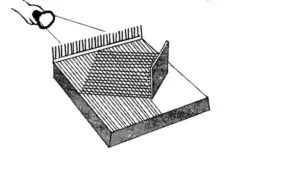NCERT Class 6 Science Chapter 11 Light, Shadows and Reflections
Here are important questions that could be asked for NCERT Class 6 Science Chapter 11 Light, Shadows and Reflections. Stay tuned for more NCERT class 6 science textbook solutions, extra questions and important questions.
Class 6 Science | Light, Shadows and Reflections
1. What are luminous objects?
Objects like sin which give out light on their own are called luminous objects. Examples: the sun, the stars
2. What is an opaque object?
Objects we cannot see through are opaque objects.
3. What are transparent objects?
Transparent objects are objects that allow light to pass through them. Example: glass
4. What are translucent objects?
Objects through which we can see but not clearly are called translucent objects. Example: fog, oiled paper
5. Name an object that can give circular shadow if held in one way and a rectangular shadow if held in another way
Cylinder
6. How does light travel?
Light travel in a straight line.
7. What is shadow?
Shadow is the dark space behind an opaque object where light does not reach.
8. Define luminous and non-luminous bodies
Bodies which emit light are called luminous bodies. Examples: stars, suns, burning candle etc.
Bodies which do not emit light are called non-luminous bodies. Example: earth, moon, book
9. Moon is not a luminous body. Why?
Moon does not emit any light. It only reflects the light of the sun. Hence, moon is not a luminous body.
10. What is an incandescent body?
Bodies which emit light when heated to a very high temperature are called incandescent bodies. Example: electric bulb
11. What are the essential conditions for the formation of shadow?
There should be an opaque object. There should be a source of light and screen. The object should in the path of light and then the shadow will form on the screen.
12. What is reflection of light?
When light rays fall on a smooth surface, they will return to the same source. This phenomenon is called reflection of light.
13. Briefly explain the construction of a pinhole camera.
Take two cardboard boxes. One should be slightly smaller than the other so that it can slide into the other with no gap between them. Cut open one side of each box. Make a small hole in the middle of the opposite face of the larger box. Cut out a square with a side of about 5 or 6 cm from the closed face of the second box. Cover this square with a translucent screen such as tracing paper. Slide the smaller box into the larger one in such a way that the hole in the larger one and the translucent square screen in the smaller one are on the same side. The pinhole camera is ready.
14. “Light moves in straight line”. Explain it with an activity.
Take a piece of pipe that is straight and fix a candle on a table at one end of the room. Now stand on the other end of the room and look through the pipe. The candle is visible now. Now bend that pipe while you are looking at the candle. The candle is not visible now. This suggests that light passes in straight line. That is why, when opaque objects obstruct it, a shadow forms.
15. With an activity explain the manner in which light travels?
Fix a comp on one side of a large thermo Col sheet and fix a mirror on the other side of the thermo Col. Spread a dark coloured sheet of paper between the mirror and the comb. Keep this in sunlight or send a beam of light from a torch through the comb. We get a pattern similar to the one shown below. This activity gives us an idea of the manner in
which light travels and gets reflected from the mirror.
